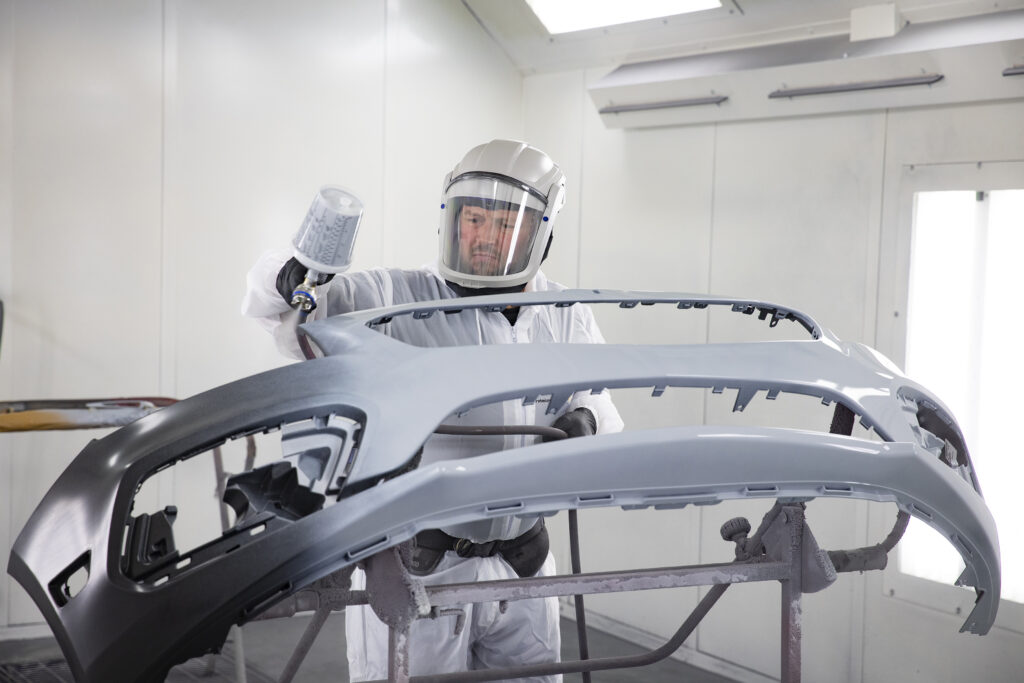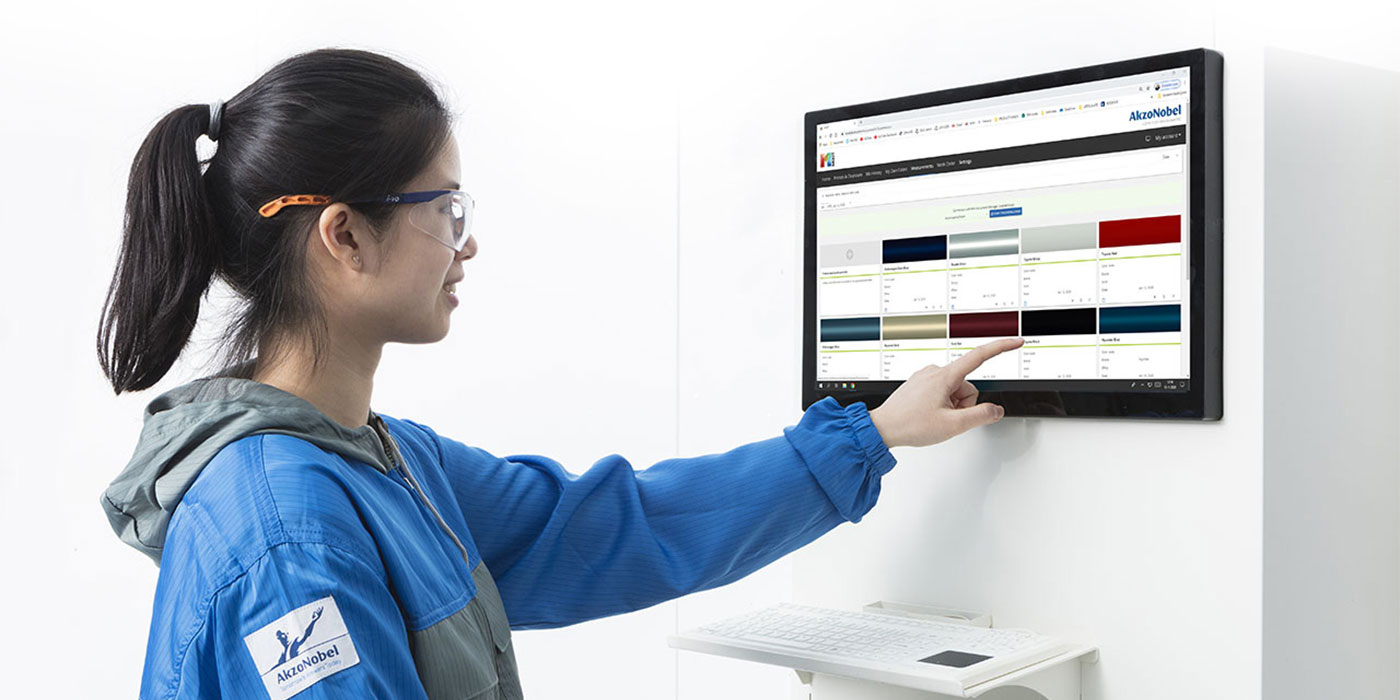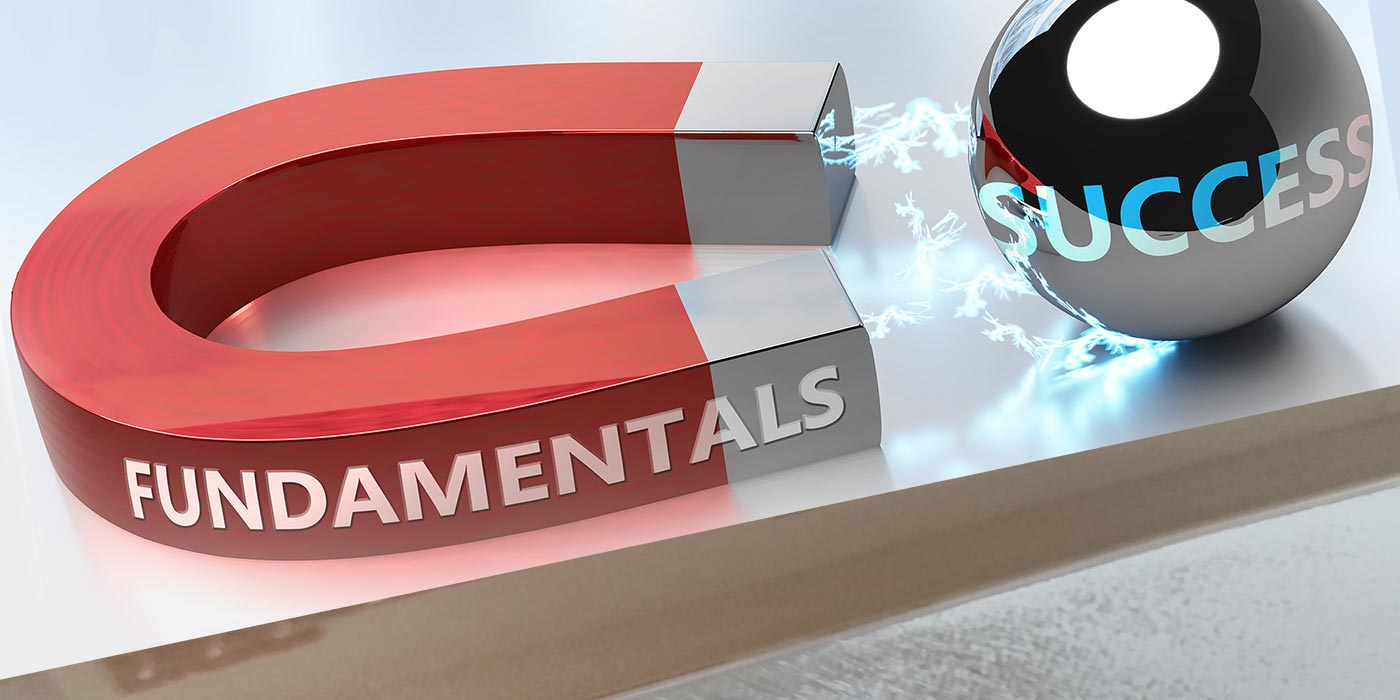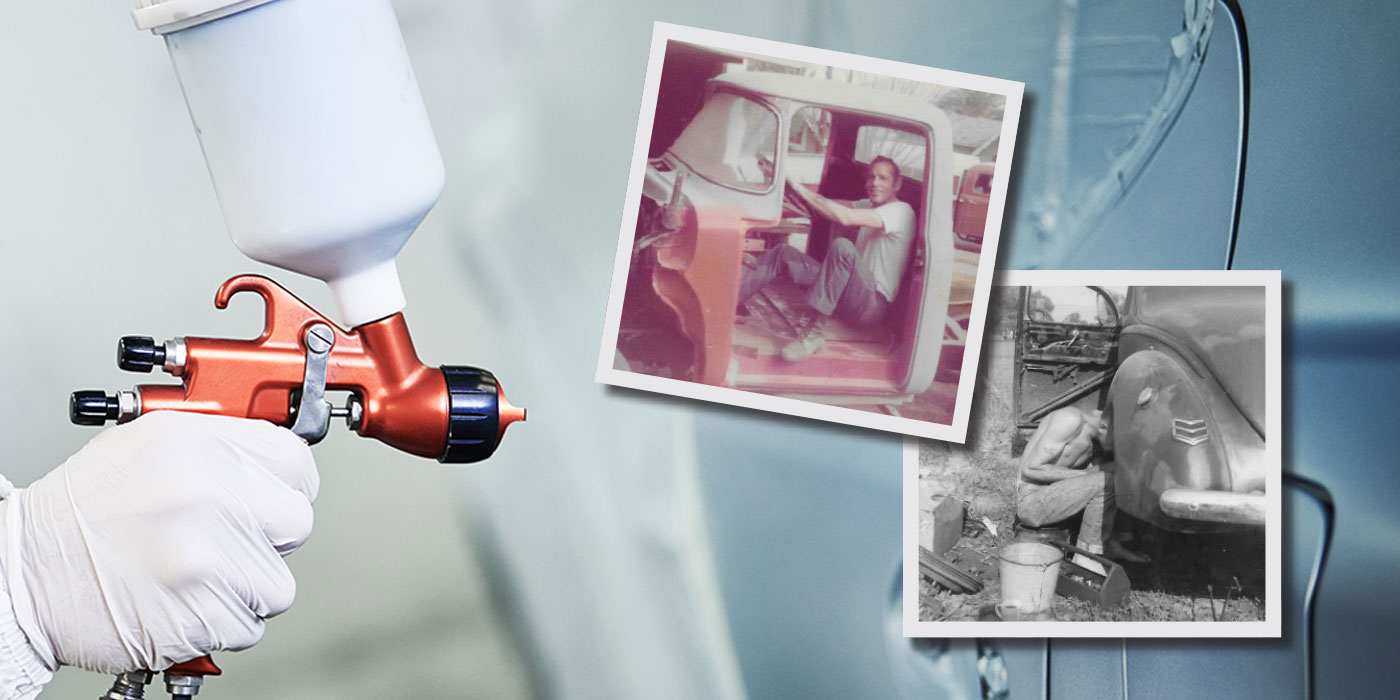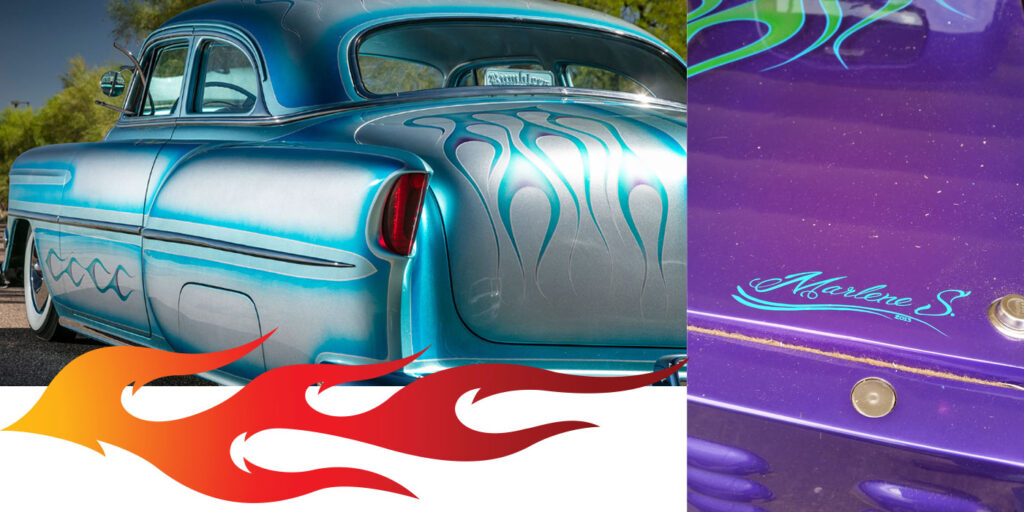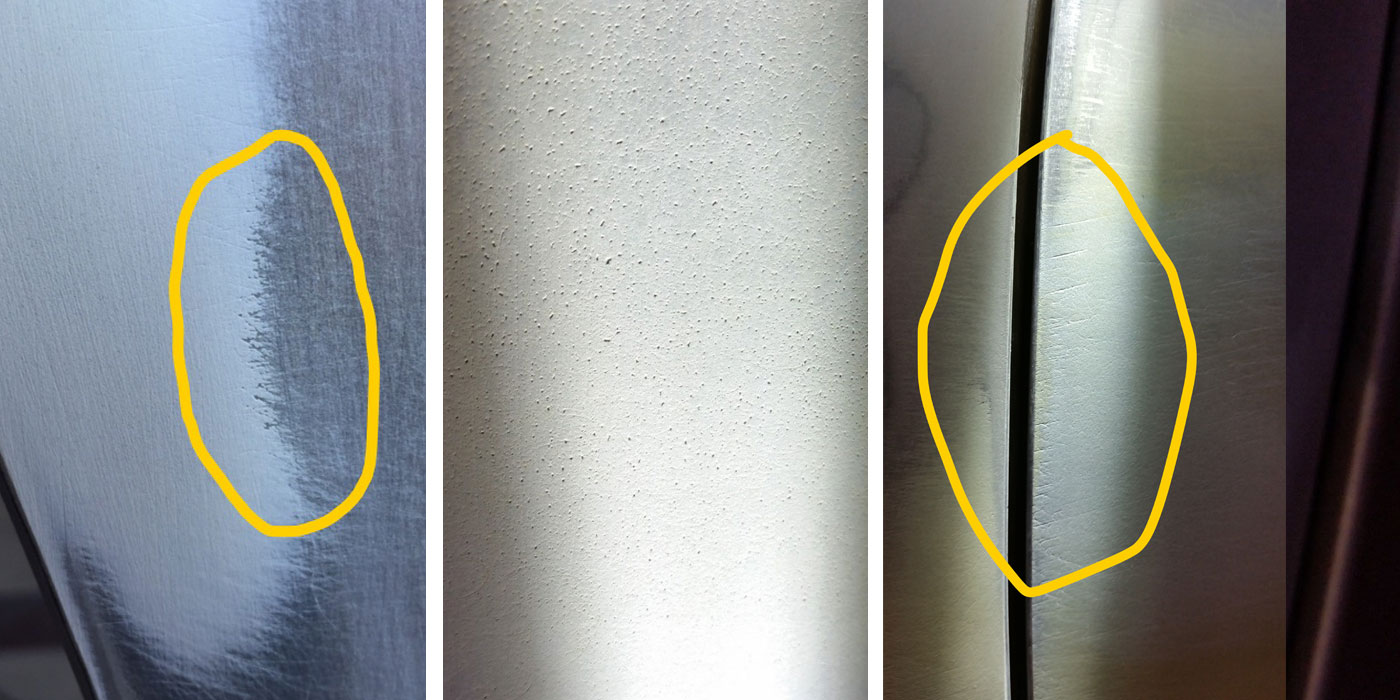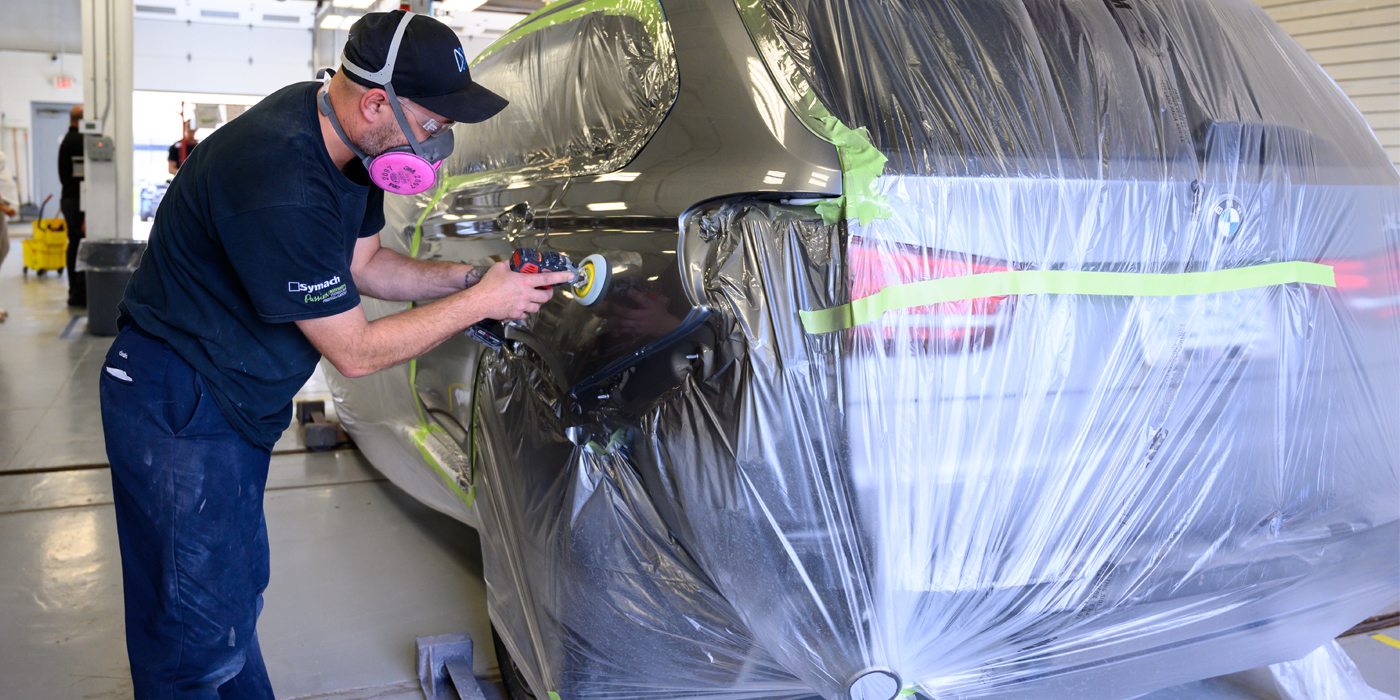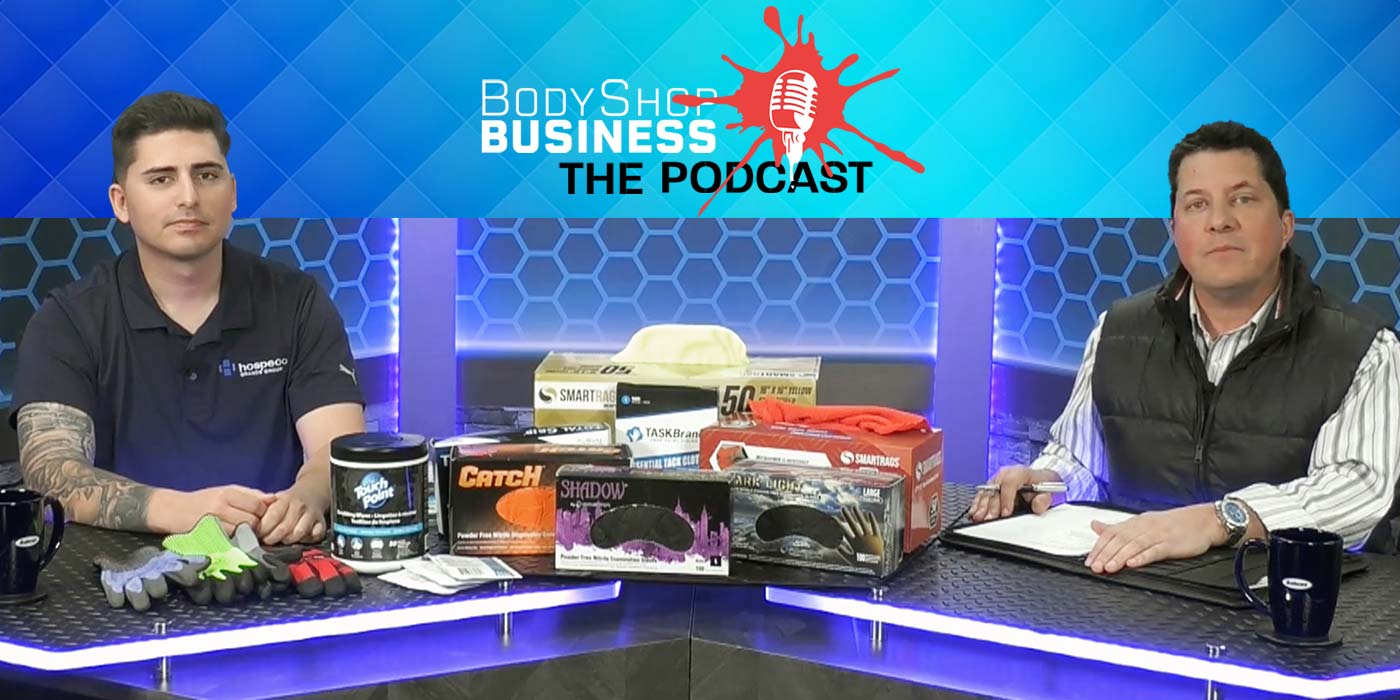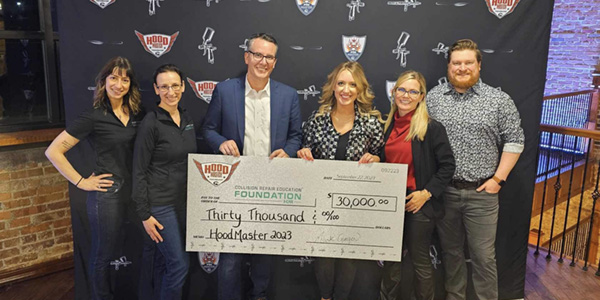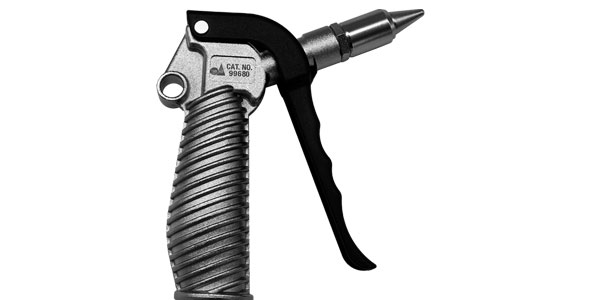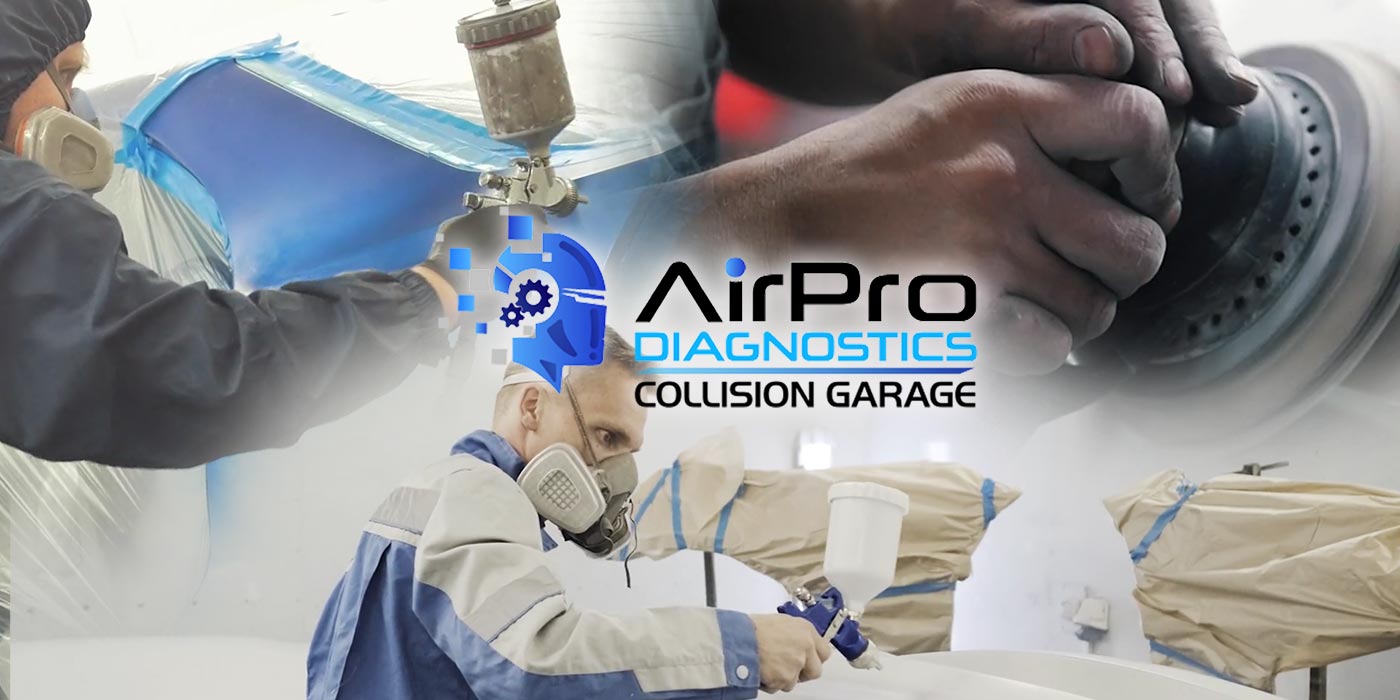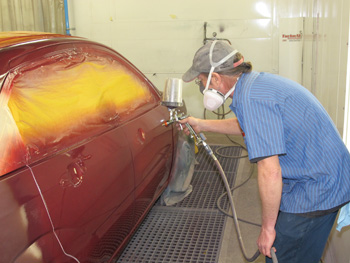 Perhaps the greatest obstacle for veteran painters when making the switch from solvent-based coatings to waterborne/low-VOC coatings is ourselves. We’re so steeped and aligned with our successful solvent habits that we’re decidedly hesitant to adopt the new, foreign techniques that waterborne coatings demand.
Perhaps the greatest obstacle for veteran painters when making the switch from solvent-based coatings to waterborne/low-VOC coatings is ourselves. We’re so steeped and aligned with our successful solvent habits that we’re decidedly hesitant to adopt the new, foreign techniques that waterborne coatings demand.
Adopt and Adapt
It’s hard to wrap our minds around procedures we never dreamed of 10 or 20 years ago. Who of us ever thought we would have fans in the booth to facilitate the drying of the basecoat? Or that we would ignore flash times altogether and put all the color on at once, as some paint lines require?
Some waterborne paint lines no longer require toner agitation. The toner remains in suspension and needs no stirring. Wow! Some lines require you to “convert” the product to water at the point of use. With some lines, there’s no shaking of the toner on a paint shaker, while a 15-minute minimum shake time is recommended with others.
How about a wet bed that’s opaque when applied and then dries clear? Or wood stir sticks, a standard with solvent, no longer used for mixing the waterborne base? Now we use a rubber spatula. Yes, there are many new nuances we must adopt and adapt to in order to remain successful.
New Rules
Contrary to solvent coatings, waterborne base has few common denominators between the various manufacturers regarding application. Therefore, no common “rules of thumb” exist that allow us to be instantly as productive as we were with our old friend, solvent. We must learn the new rules of water according to each specific manufacturer and follow those rules in order to master it.
The technical reference manual and the technical reps who come to train us must be embraced. Regardless of what we used to know and do, this new beast, water, demands an open mind and new skills.
However, there are some common threads that run through all of water.
Prepping
Waterborne base is generally less forgiving than solvent when it comes to prepping your jobs. For starters, it’s typically more sensitive to contamination and, as a result, cleaning your panels is much more critical – not just your final wipedown, but your pre-prep cleaning.
If you fail to properly clean your job and wind up with “ugliness” as you’re painting, it takes much longer to dry and sand and fix that problem.
While the waterborne color appears viscous when it’s wet in your gun, it dries quite thin, telegraphing irregularities such as scratches and requiring us to finish off our prep with finer abrasives than before. Even a sealer edge can be “mapped” by the color once it’s dry.
With rare exception, your sanding procedures will need to change, as everything sanded demands a grit that’s a couple grades finer. Your specific requirements will be dictated by the paint manufacturer you’re using. They know what works with their product, and the wise painter is obedient.
If you still use masking paper for the “critical edge” when masking, you must now be certain that it’s a paper with a membrane or is otherwise water resistant. Otherwise, you’ll need to switch to a plastic “critical edge.”
Shooting and Drying
Considering spray guns, nozzle/needle recommendations of 1.3 to 1.4 are acceptable, so your tried and true gravity guns that are still in good shape will continue to serve you. However, this is a perfect excuse to update your fleet with a new gun or two. I’ve always leaned toward trying to work a new tool into a new project or situation, in this case a new paint line.
Another piece of equipment you probably don’t have that can assist you in your efforts is a hair dryer. Yep, a common hair dryer. You’ll find it invaluable for flashing off a spray-out card when you’re working on a color match. The heat and wind of the hair dryer disrupt the surface tension of the water and help facilitate flash-off.
And speaking of disrupting the water’s surface tension, you’ll utilize either a fan or an air amplifier in the booth to create a current of air over the wet panel for the same cause.
Utilization of these tools is even more necessary in humid climates or high humidity seasons, as we’re asking the water to be absorbed into an already wet, thick atmosphere. It simply needs a little more help to achieve that.
Each paint manufacturer recommends different gun cleaning equipment, but just know you’ll use a different process and hardware for cleaning your water guns. You also must remain cognizant of galvanic corrosion and properly clean, condition and dry your guns, inside and out.
New Habits
None of the above ramblings are intended to discourage you from embracing the switch to waterborne, but only to get your attention. I respectfully submit for your consideration that you are a professional. And as a professional, you can learn, think and adapt to the new rules of waterborne coatings. As you adapt, you’ll see that you can master this new animal, as you did with solvent, and there are many advantages to it. New habits will replace old habits, but they will become habits nonetheless.
It’s critical that you follow the new rules that your technical rep gives you in order to ensure success. The good news is, there is no voodoo to deal with, just new habits to learn to deal with the product’s different properties.
These new habits will help you become a more consistent painter, and consistency allows you to be predictably productive. Consistency also allows you to be more accurate, and accuracy means fewer mistakes and redos, which ultimately results in greater profitability for you and the shop.

